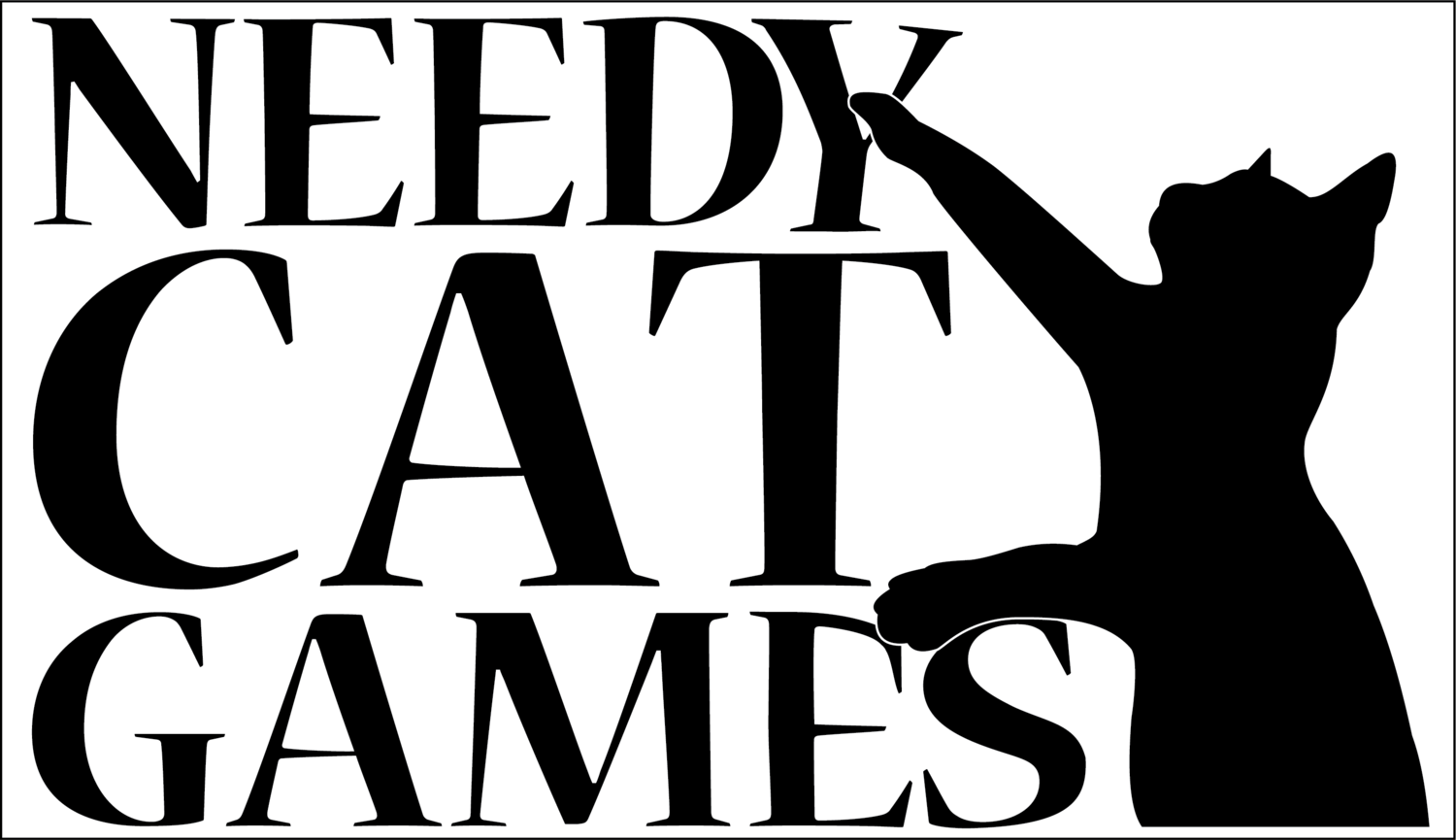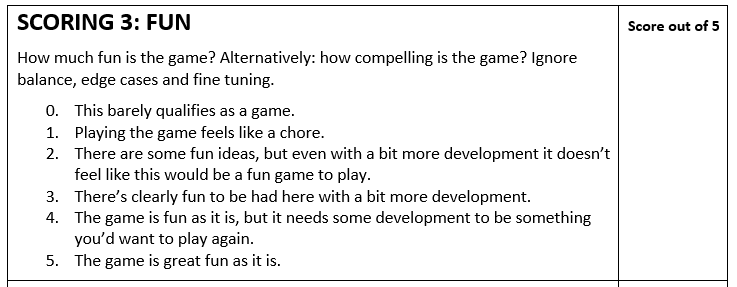Hello everyone! James here.
Over the past week and a half, Sophie and I have been spending our evenings playing through the fourteen print-and-play games that were submitted for the Game Jam we recently ran. For anyone who’s out of the loop, game jams are a concept that (as far as I’m aware) started out in the world of video games, where people rush to create a playable game in a challengingly short space of time. They’ve since become a staple of the tabletop gaming community, and we decided to set one up to raise some money for Feline and Wildlife Rescue Nottingham - if you’d like to hear the story behind it, check out our previous blog post.
We had a great response - twenty tickets were sold to people around the world! We raised £180 for the rescue, which we bumped up to a nice round £200. Emma and Fee, who run FAWR, were really pleased with the donation, and we promised to run some more events in future to help them out. For now, though, back to the games!
Our intrepid designers were given a simple task: design a fully playable tabletop game based on the theme “Pets and Wildlife”. The entire game had to fit into a three-page pdf, and they had to assume that players only had access to a limited selection of additional resources (ten six-sided dice, twenty tokens in up to four colours, pens, paper, card, scissors and glue). We asked that the game include (at least) one of three game mechanics that we chose at random, which ended up being Drafting, Ladder Climbing and Score and Reset.
Considering the time constraints, we made it clear that we weren’t judging the games on how they looked - but that didn’t stop people from putting a load of effort into making their entries pretty!
They had 48 hours (Friday lunchtime to Sunday) to submit them, and we set up a channel on our Discord server for entrants. As soon as the email went out with all the details, people set to work! We were thrilled to see so much chat on the Discord server - people offering each other support and advice, keeping each other on target and just generally being lovely. We already knew we’ve built a great community around Needy Cat Games, but seeing it in action was really rewarding.
Of the 20 tickets, we received 14 entries. An amazing response! Fourteen complete, playable games, each made in a weekend! We were gobsmacked.
When the time came to judge the games, we wanted to make sure we gave every one a fair chance - we knew we wouldn’t be able to sit down and play them all in one sitting, so we wanted to have a system that would give us a clear framework for rating everything. Thankfully, in the competition rules we’d quite clearly stated what we were judging the games on:
How well the game delivers the theme.
How well it utilises the mechanics (players could use one or more of the mechanics - we scored each one separately, and chose the highest score among them, so people weren’t given any more points for using more of the requested mechanics).
How much fun it is to play.
How clearly the rules are written, and how easy they are to follow.
How innovative the game is.
I put together a score sheet, which broke down each one of those factors and let us clearly give it a score out of five. Some of these are really hard to quantify, but having a framework really helped standardise the scores across all of the games. Here’s one of the sections of the score sheet, to show you how it worked.
We’re pleased to report that almost all of the games scored 3 or higher - what a talented bunch of designers we’ve found!
Finally, we included a score penalty for games that took too long to assemble. Most of the games featured some amount of construction - sticking things to card, cutting out tokens, and so on. The rules we sent out stipulated that it ideally shouldn’t take an average person more than ten minutes to fully assemble all of the game’s components. That’s a very hard thing to measure, but we’re hard-bitten prototyping veterans (we sometimes spend who days doing nothing but cutting and sticking because we need to get multiple test copies of games made!) so we decided that we’d build each game as fast as we could, time how long it took, and deduct one point for each full minute over ten. We reasoned that if it took us more than ten minutes, it’s a sign that the assembly might be a bit more complex than we asked for!
So, with scoresheets, a large pile of printouts and a set of the approved extra components, we set out to play all fourteen games. It was no mean feat! We wanted to make sure we read all of the rules thoroughly and gave each game a proper play-through. However, as of last night, it’s all been done. We’ve totalled the scores, and my goodness, it’s close.
Without further ado… here are the top three games. Only one entry gets the prize ($75 of gift certificates for The Game Crafter, and a Steam Key for Tabletop Simulator), but we think the #2 and #3 spots deserve some recognition. Here we go!
Third Place: Cats vs Houseplants, Iain Chantler
This one was great fun - an asymmetrical two-player game, where one player is trying to bloom a number of plants spread across their shelves while the other player - taking on the role of a mischievous cat - tries to wreck them. It had a really interesting take on card drafting, with some head-scratching decisions. It was one we definitely want to play again once it’s had some more development!
Second Place: Trash Wizards and the Great Ham Heist, Ty Oden
This entry - a dice-drafting game about a bunch of scraggly animal adventurers stealing food from the neighbourhood deli - was utterly dripping with theme, from the artwork adorning the rules page to the colour text on the cards and the factoids for each character. Ty did a great job of creating a fun, tightly-written game with a surprising amount of replay value.
First Place, Prize Winner: Roll ‘n’ Feed, Andres Desa
And here’s our winner! We had a few roll & write entries (they’re always a popular choice for print & play games), but this one scored the highest by having some really interesting interactions between the players, a really well-written set of rules and a solid use of the theme. As soon as we finished one game we wanted to play again, which is more than can be said for some polished, published games we’ve seen! Congratulations Andres - we can’t wait to see more of your designs in future, and we hope you make good use of the prize.
Honourable Mention: T’Bantam Menace, Martin Lockett
Sadly this game didn’t make it into the top three, but we had to mention it because it had us cackling with laughter, both while playing it and while reading the rules. It was the most unique and innovative entry by a country mile.
Reading the rules, everything seemed pretty standard at first - it’s a card drafting game where you’re trying to collect sets of building materials so you can build a fence around your chicken farm. Fair enough! Then things take a radical left turn… when you’re instructed to build a fence out of the cards you’ve collected. To quote the rules: “Actually build it! House of cards style. Players may use the cards how they wish: bend, tear whatever". Then, your opponent tries to flick counters (chickens!) over or under your fence. The more cards you collected that didn’t fit into sets, the more chances they get, and each chicken that escapes loses you points. Then you reset and do it all over again, with the same set of cards - some of which will have been mangled out of recognition.
Martin, you have created something barmy and wonderful. This game is unlike anything we’ve seen before. It’s a collection of entirely disparate ideas that shouldn’t work, but somehow does. The fact that it didn’t make the top three is a clear indicator of how high the standard was.
So there we have it! The game jam is over. Once again, we were knocked out by the quality of work on show; the top eight games were within 5 points of each other. I’m so glad we set up the scoring system that we did, because otherwise I don’t know how we’d have chosen a winner.
Thank you SO MUCH to everyone who took part, and we can’t wait to do it all over again at some point. Also, we’ll soon be updating the Game Jam page of the site with downloadable versions of a number of the entries, so you can try them yourselves - watch this space for an update! Also, if you’ve read this and you’re feeling inspired to have a go at a super-quick game jam yourself, why not check out 10 Minute Design Challenge?
Finally, thank you once again to Emma and Fee of Feline and Wildlife Rescue Nottingham, who were the inspiration for this whole thing. If you’d like to support them yourselves, follow this link to their Facebook page, or just send a donation via PayPal to FAWRescue@hotmail.com.






